Welcome to the 2021 edition of my Toronto Maple Leafs prospects rankings.
Even though the team hasn’t drafted in the first round in two of the past three years, the Leafs have a surprisingly strong farm system, particularly for a playoff team. They’ve made some terrific decisions at the draft, including selecting Nick Robertson at 53rd overall, selecting Rasmus Sandin at 29th overall, and turning the 44th pick into both Roni Hirvonen and Topi Niemela.
Unfortunately, the team failed to draft many valuable depth players between 2015 and 2017, something that is hurting them quite a bit at the moment. While many of the players on this list are at least two years away, it does look like quality help is on the way. Several of these players will go on to play multiple seasons with the Leafs, while others could be used as part of a trade.
In terms of tiers, there is a dropoff after #3, #6, and #9. The tiers probably matter just as much as the rankings do, so if you want to flip players within the same tier, I won’t call you crazy.
Without further ado, let’s start with prospects #6-10 before #1-5 follow later this week.
Just Missed
Joey Anderson, coming off of a strong season with the Marlies, is NHL ready. However, his upside is limited and he’ll have to be placed on waivers in order to go back to the Marlies. Based on the Leafs‘ depth chart, he’ll likely have a tough time winning a job out of training camp, so it’s tough to put him on this list.
Mikko Kokkonen plays a pretty boring style as a shut-down defender, but he was one of Finland’s better defensemen at the World Juniors and didn’t look out of place with the Marlies. I think he needs to improve as a puck mover to be a major difference maker, but the defensive side of his game could carry him to an NHL job. You could easily swap him in towards the end of this top ten list.
Artur Akhtyamov, a 19-year-old goalie, was Toronto’s fourth-round pick from 2020. Goalies are incredibly unpredictable, but since it’s the most important position in hockey, he probably has more upside than many of the players on this list. However, I’m not exactly a goalie expert and I don’t think there’s overwhelming evidence that would force me to include him here.
Semyon Der-Arguchintsev played well in six games with the Marlies, but he’s quite small and has a lot of work to do if he wants to earn a NHL job. You could make an argument for him at #10, but his lack of goal scoring has always concerned me.
Veeti Miettinen and Mike Koster are good players in the NCAA, but I haven’t quite seen enough to put them in the top 10. Filip Hallander, who the Leafs gave up in the Jared McCann trade, probably would have ranked ninth or tenth on this list.
Pontus Holmberg is the same age as Liljegren and is only scoring about 0.5 points per game in the Swedish Hockey League. He could end up as a decent depth forward, but I just don’t see a ton of upside there at this point.
10. Dmitri Ovchinnikov, 5’11” C/LW, Sibir Novosibirsk (KHL)
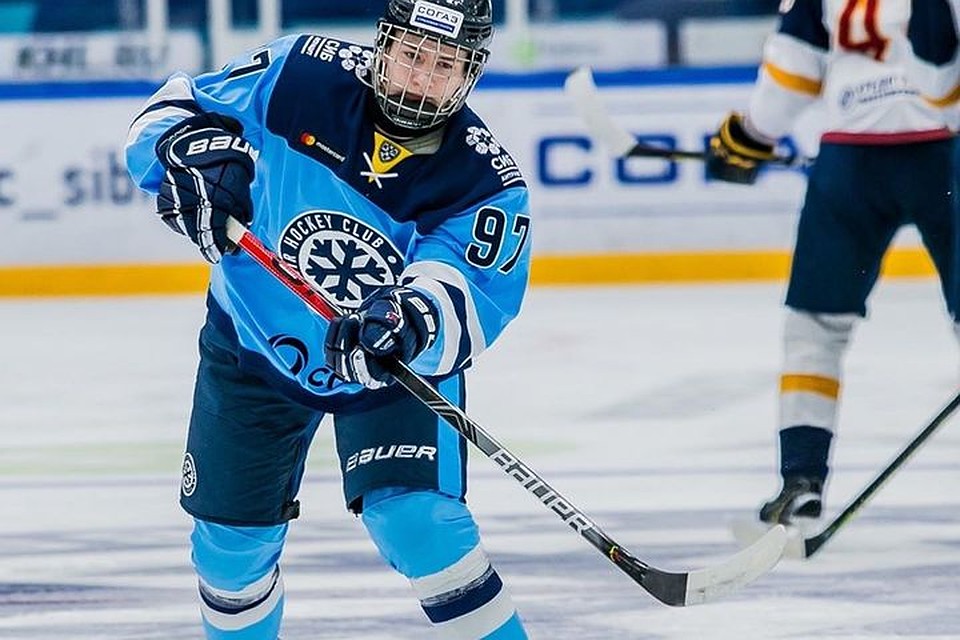
Skating: 60
Puck Handling: 55
Playmaking: 50-55
Physical Play: 30-35
Shooting: 50
There’s a handful of prospects who could have landed at #10 on this list, but I went with Ovchinnikov for a few reasons. First, his combination of speed and skill is quite intriguing, providing him with a strong foundation to build off of. Second, he’s posted impressive numbers in Russia’s junior league in back-to-back years. He needs to get much stronger, but there’s plenty of time for him to do that (he’ll only be 19 years old next season).
Ovchinnikov is clearly his team’s star in the MHL, where he plays center and his speed and skill make him one of the best transition players in the league. Despite sharing the same draft class as Amirov, he’s nearly a full year younger than him and his MHL production last season was quite similar to Amirov’s from 2019-20. While he doesn’t have Amirov’s two-way game, I’m impressed that he was able to earn some KHL minutes as a teenager.
He’s very similar to Abramov. He’s a bit undersized and iffy defensively, but his offensive skillset really stands out. A dual-threat as a playmaker and a shooter, his highlight reel is quite fun to watch. Like Abramov, I think he could stand out offensively at the World Juniors and be a top scorer in the CHL if he played in North America. I actually think he might be a tad faster than Abramov, which is crucial. If you’re going to make the NHL as an undersized forward, you better be fast.
Ovchinnikov is a teenager who looks like a teenager. This isn’t an Aaron Ekblad type of situation, where the player looks like a man amongst boys in junior hockey. He relies on his skating and puck handling abilities to make an impact and wouldn’t win many 50-50 puck battles in any pro league right now. However, he’s 5’11”, so he’s really not that short. While he will never play like Zach Hyman, he should be able to bulk up and at least reduce the size question marks.
His vision makes him a real asset on the power play, where his creativity helps him to create plenty of high-danger passes. As a left shot who typically plays on his one-timer side on the power play, it felt like everything ran through him. He’s nowhere close to being NHL ready — you may want to mentally treat him as a 2021 pick rather than a 2020 pick — but there is some decent scoring upside here. I’m interested to see what his two-way game looks like once he gets stronger.
9. Nicholas Abruzzese, 5’9″ LW, Harvard (NCAA)
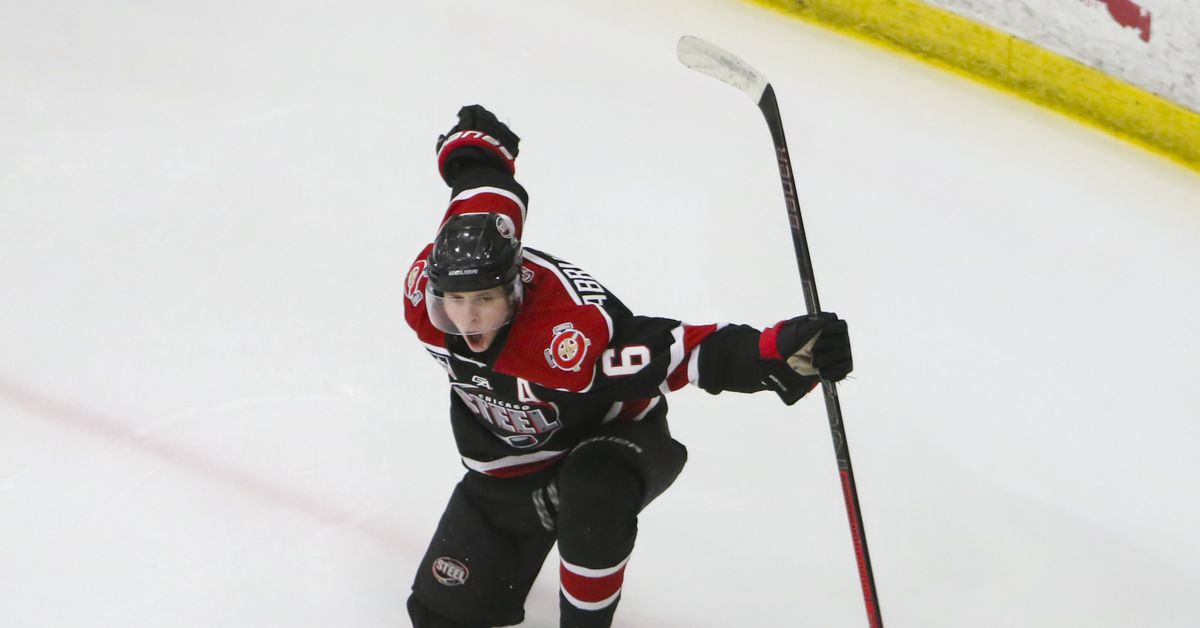
Skating: 50
Puck Handling: 60
Playmaking: 60
Physical Play: 40
Shooting: 50
Of the prospects on this list, Abruzzese is the player who I’ve watched the least. I’ve only watched him play a couple of games with Harvard, but I did see him play a handful of times back when he was on Chicago in the USHL, where he was the leading scorer in the league. His scoring production is simply too strong to ignore at this point.
I’m impressed with how Abruzzese seamlessly translated his scoring production from the USHL to the NCAA. Scoring 44 points in 31 games as a rookie at Harvard is extremely impressive. He was actually coached by current Marlies head coach Greg Moore in the USHL (the two could be reunited in the near future).
Abruzzese’s offensive game will have to carry him as he’s 5’9″ and not all that strong. However, he carries a lot of similarities to Nick Robertson as an undersized forward with plenty of skill and a great work ethic. His shot isn’t quite as powerful as Robertson’s, but he does have a one-timer in his arsenal and often beats goalies before they have a chance to get set. Like Robertson, he’s able to use his 5’9″ height to his advantage in many ways as he owns quick hands and plenty of skill.
Abruzzese’s calling card is his playmaking, something that makes him the focal point of Harvard’s power play. He sees passing lanes that others don’t and can make difficult passes on his backhand. He’s certainly comfortable with the puck on his stick at this point. The main offensive play-driver for multiple teams now, he’s clearly a very driven and intelligent player. That said, he’s still undersized and he’s going to have to prove that he can win his fair share of puck battles at the NHL level.
Like Hirvonen, he shares some similarities to Adam Brooks. Similar to Brooks, he was drafted as a double overage player in the fourth round after putting up eye-popping numbers in junior hockey. Like Brooks, he’s just average in terms of explosiveness and doesn’t have the speed of a Johnny Gaudreau. Both players compete well and both are often referred to as smart players with good vision, but both lack the size and speed of Zach Hyman or Pierre Engvall.
Players like Mikheyev and Engvall use their speed and length to take away time and space for their opponents. That is probably going to be a weakness in Abruzzese’s game, but continuing to add more and more power to his skating stride would help. If he can bring enough to the table in terms of two-way play and puck battles, he’ll have more than enough playmaking talent to be a solid NHL contributor. Like Brooks and Petan, I expect him to be able to rack up a fair number of points at the AHL level, but he’s going to have to prove that he can drive a line offensively in the NHL.
The Leafs seem to like what he brings to the table, but he’s the same age as Timothy Liljegren, so there will be reasonably high expectations when he becomes an AHL rookie. He didn’t play last season — Harvard’s season was canceled due to the global pandemic — and I wonder if I might be underrating him a bit as a result.
8. Mikhail Abramov, 6’0″ C/LW, Toronto (AHL)
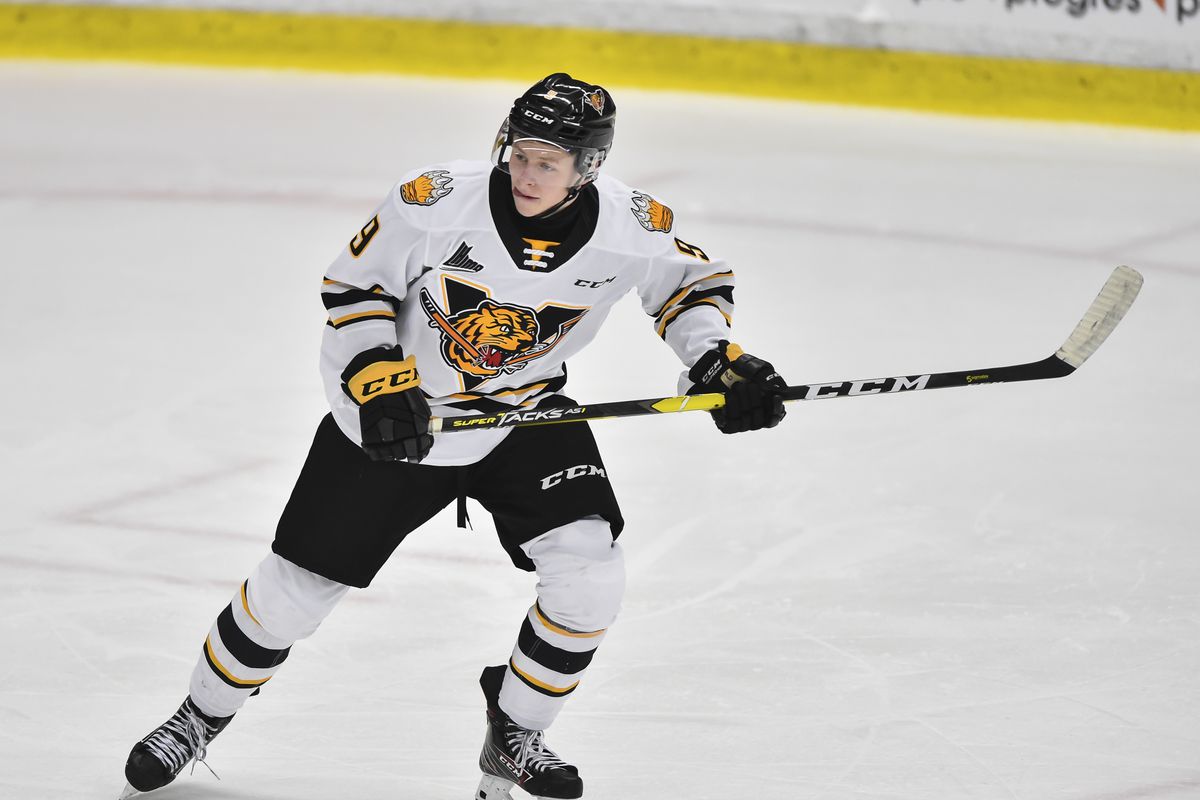
Skating: 50
Puck Handling: 60
Playmaking: 60
Physical Play: 40-45
Shooting: 55-60
First and foremost, Abramov is a highly-skilled offensive player. He’s definitely a good playmaker, a good shooter, and a magician with the puck. One of the best scorers in the QMJHL last season, he ran Victoriaville’s power play. While he only recorded two assists in four games at the World Juniors, he generated his fair share of dangerous chances for his team and looked far more dangerous than his stat line suggests. He also picked up a beautiful assist against Sweden and ended up drawing the penalty that led to the game-winning goal.
Abramov is the type of player who thrives during three-on-three overtime, where his craftiness and vision take over and we’re usually left with a highlight-reel play. He’s always been a good playmaker — he racked up six assists in five games for Russia way back at the 2018 Hlinka-Gretzky tournament and notched 44 assists in 70 games as a QMJHL rookie. It’s his goal-scoring that really took a step forward after he was drafted. His wrist shot is now a strength of his game rather than a weakness and his one-timer is a threat as well.
Abramov’s offensive game isn’t going to hold him back, and even if he doesn’t make the NHL, I expect him to be a good AHL scorer like Jeremy Bracco was. He’s not overly fast for a player of his size (he’s listed at 6’0″ but might be a tad shorter) and he’s not overly strong, so he’s going to have to prove himself defensively. I don’t see him killing penalties or playing on a checking line at the NHL level, but taking one more step forward as a skater would go a long way. Alex Galchenyuk is the perfect example of a highly talented offensive player who ended up on waivers due to a below-average two-way game. If Abramov can’t be a league-average forward defensively, there will be a lot of pressure on him to produce on the scoreboard.
He’s basically the opposite of Amirov, who is an above-average skater, generates plenty of takeaways in the neutral zone, and is likely to play on an NHL penalty kill. I think Abramov is better on the power play than Amirov is at this point — he’s better suited to be his team’s primary playmaker or shooter — but he doesn’t have the same two-way game that tends to give a prospect a “high floor.”
There is a chance that he ends up like Nic Petan, a player who had more than enough offensive talent to dominate junior hockey but lacked the strength and explosiveness to be a top-six forward at the NHL level. However, his combination of puck-carrying skill, shooting talent, and feistiness gives him some offensive upside if he can become one step faster.
7. Roni Hirvonen, 5’10” C/LW, HIFK (Liiga)
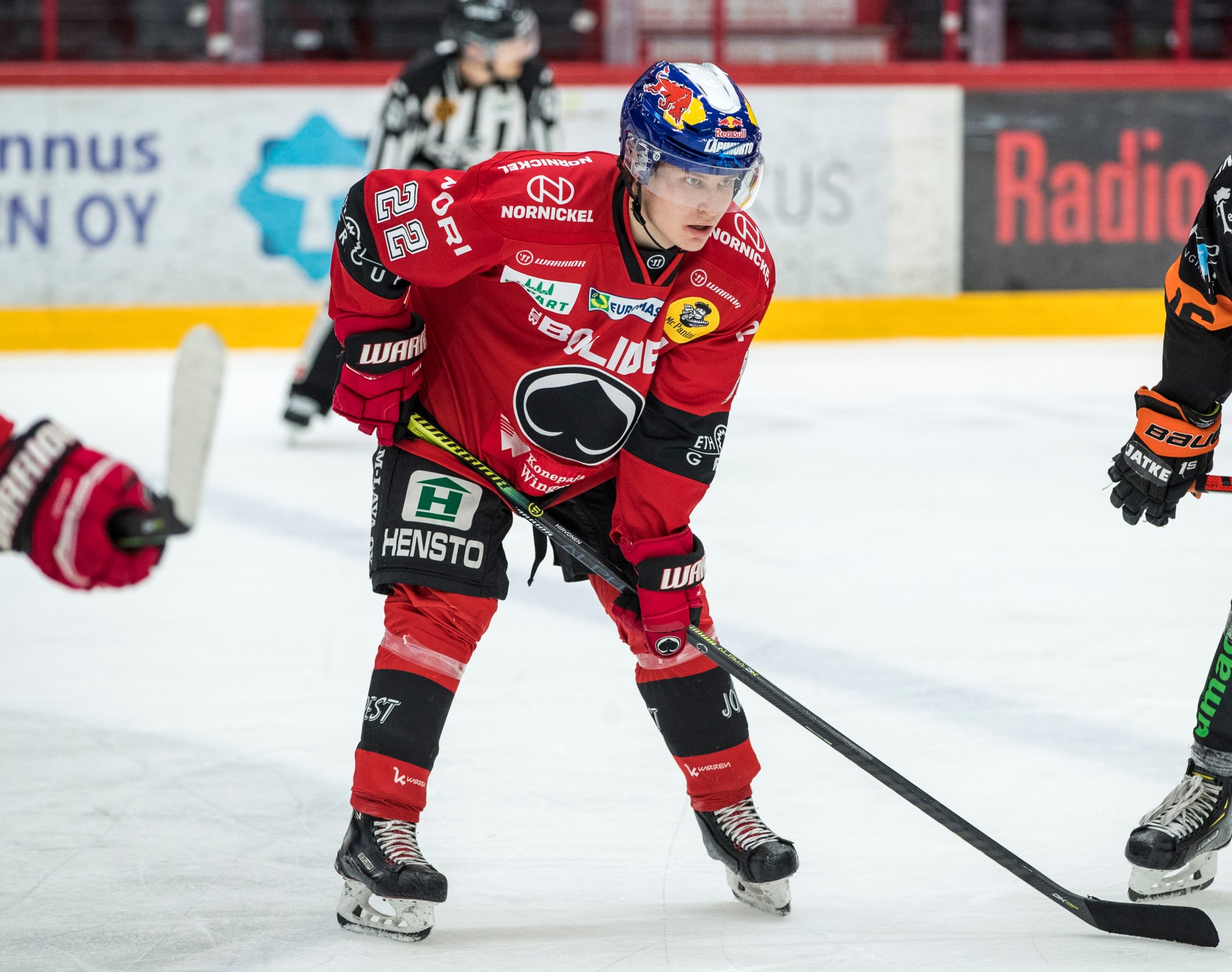
Skating: 45
Puck Handling: 60
Playmaking: 55
Physical Play: 45-50
Shooting: 50
Hirvonen is a 5’9″ forward who plays rather fearlessly. He gets to the dirty areas, doesn’t shy away from contact, and regularly impresses on the cycle as a playmaker. He protects the puck well as a smaller forward who is unafraid to throw an elbow at one of his opponents. While it’s definitely fun to watch his combination of grit and skill, he’s an average skater at best — a tough knock on a 5’9″ forward.
Hirvonen posted six points in seven games as an 18-year-old at the World Juniors and is eligible to play in next year’s tournament as well. He greatly benefitted from playing with Anton Lundell — who was one of the best play-drivers at the tournament — and Kasper Simontaival, who has always racked up points at international tournaments. Hirvonen might move back to center for next year’s event, but he played on the wing on Aatu Raty’s line at the recent World Junior Summer Showcase. While he greatly benefitted from playing with Raty, he was impressive in his own right and just missed picking up his third hat trick at the event.
Hirvonen was a strong facilitator in the net-front role on the power play at the World Juniors, and Team Finland will be able to count on him to do that once again. He’s similar to Joey Anderson in that he brings a strong work ethic to the table, but his size and speed combination limit his upside a bit. He brings more skill and playmaking talent than Anderson as well as the potential to play up the middle, but he’s going to have to work with Barb Underhill and the Leafs development staff to get a step quicker. If he ends up being a league-average skater, I expect him to be an NHL player in some capacity.
He’s basically the complete opposite of Pierre Engvall. The 6’5″ Engvall covers a ton of ground with both his long reach and speed, leaving little space for the opposing team as a result. Hirvonen simply doesn’t cover much ground at the moment, and even if he improves slightly as a skater, he may be better suited to play on the wing as a result. However, he brings far more playmaking talent to the table than Engvall and should be able to help his team create offense.
Adam Brooks is an undersized center who was a star back in junior, but it’s tough to make it as a scorer when you’re small and an average skater. Hirvonen brings a little bit more grit and strength to the table than Brooks — I think he’s a little bit better at creating offense around the net — but he could face similar challenges. I mentioned last season that I liked Brooks on the wing — I believe he provides more offense there, and the Marlies played him there for much of last season. Hirvonen is still only 19, but unless he can create more power in his skating stride, he might end up as a complementary winger, rather than a center.
Fortunately, he should get the opportunity to work with an excellent development staff, and there’s no reason to give up on him playing up the middle just yet.
6. Matthew Knies, 6’3″ LW, University of Minnesota (NCAA)
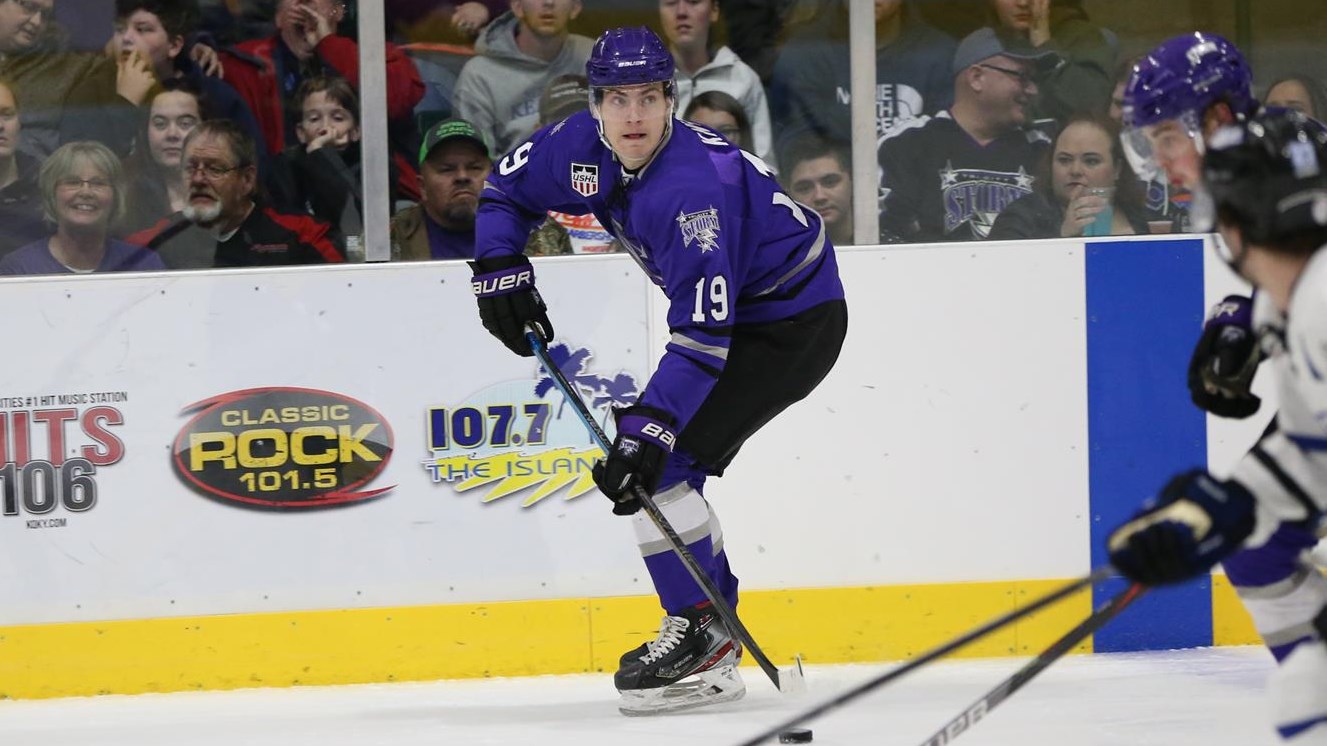
Skating: 45-50
Puck Handling: 55-60
Playmaking: 45-50
Physical Play: 60
Shooting: 60
Knies is a 6’3″ power winger who was selected by the Leafs with the 57th overall pick in the 2021 entry draft. After several years of loading up on good but undersized players in that range of the draft, the Leafs opted for a player who specializes in winning physical battles. He simply overpowered USHL defenders in the corners last season. It was next to impossible to knock him off the puck.
Knies is also quite skilled. While he’s labeled as a “dump and chase” player by some scouting outlets, it’s clear that he can pull off dekes with a high degree of difficulty and doesn’t limit himself to only making the simple plays. In one of the games I watched, he completed a no-look backhand pass in the neutral zone that gave his teammate plenty of space to gain the zone. He also regularly dances around opposing players by throwing the puck between their legs and skating right around them. His passing and creativity are certainly ahead of someone like Carl Grundstrom, who was also a power forward in Toronto’s prospect pool a few years back.
There is plenty of power in Knies’ wrist shot. He played on his non-one timer side on the outside of Tri-City’s 1-3-1 power play in the games that I watched last season. He can beat goalies from medium-danger scoring areas, and he’s not afraid to get to the net. His calling card is definitely his ability to win physical battles, though, as he throws his 6’3″ frame into his opponents and carries a low center of gravity. He excels in small spaces, so if he already has the puck in the corner, a defender is going to have a tough time getting it off of him.
Knies will be heading to the University of Minnesota this season, where he will play with another Leafs prospect in Mike Koster (who also used to play for Tri-City). They also played together way back at the 2019 World Jr. A Challenge, where Knies played in a fourth-line role despite the fact that it wasn’t his draft year. He’ll be up against bigger and stronger competition there, and while his physical advantage will be reduced at that level, he’ll still overpower plenty of his opponents.
The main weakness for Knies is probably his skating. While he’s capable of producing a nice end-to-end rush at the USHL level, he’s certainly not going to be the next William Nylander, and he’s well behind someone like Rodion Amirov. He won’t be able to beat defenders out-wide as often as those players, leaving him more reliant on winning 50-50 puck battles through the dump-and-chase method. I project him as league-average skater. I don’t think his speed will hold him back from earning an NHL job, but he’ll probably be “just okay” in transition.
For most of the prospects on this list, their focus is on getting stronger and winning more physical battles. For Knies, strength won’t be a problem, but he needs to get one step faster if he wants to be a really impactful player. I’ve seen the Zach Hyman comparisons thrown around on my timeline, and while Knies does have more skill and a better shot, I think he’s well behind him as a skater. Hyman is an elite forechecker — more than just a good one — and Knies will have to get faster if he wants to end up anywhere close to Hyman in that regard.
Knies looked like one of the better forwards at the World Junior Summer Showcase, where it felt like he was constantly in the middle of things. He played on both special teams units, won plenty of puck battles, showcased his heavy shot, and got to the net. The Leafs are definitely happy with what they’ve seen thus far.
Nate Leaman spotlighted Matthew Knies (TOR) as one of the surprises of camp. Thought he showed he can score from distance, played a power game down low, good touch with the puck. Finished camp with four goals and seven points.
— Chris Peters (@chrismpeters) July 31, 2021

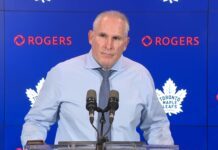
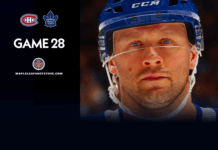

![Craig Berube on Joseph Woll leaving the game injured in Carolina: “Hopefully, it is not [serious], but I really liked the way Hildeby came in and handled it” Craig Berube, Toronto Maple Leafs head coach](https://mapleleafshotstove.com/wp-content/uploads/2025/09/berube-pg-sep-21-218x150.jpg)
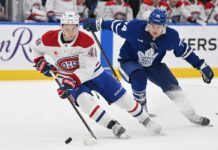

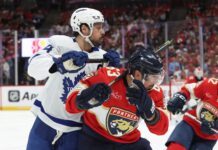

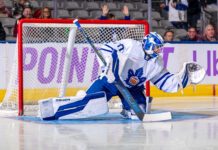

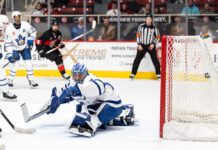


![John Gruden after the Leafs prospects’ 4-1 win over Montreal: “[Vyacheslav Peksa] looked really comfortable in the net… We wouldn’t have won without him” John Gruden, head coach of the Toronto Marlies](https://mapleleafshotstove.com/wp-content/uploads/2025/09/gruden-post-game-sep-14-218x150.jpg)



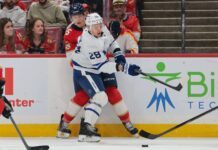




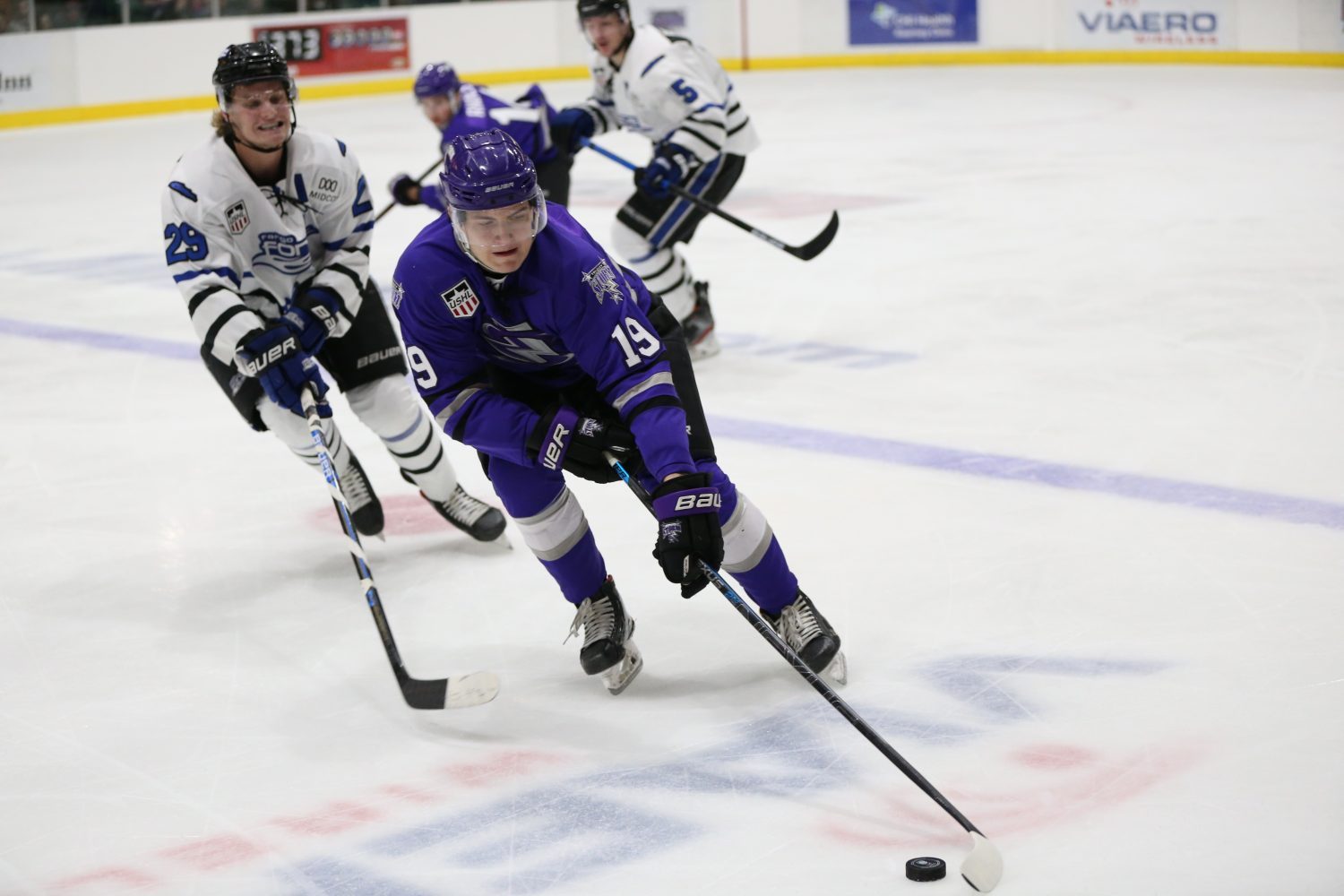
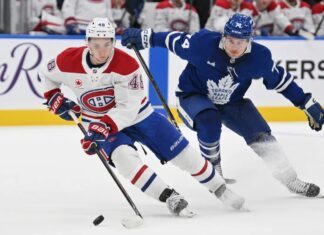





![Craig Berube on Joseph Woll leaving the game injured in Carolina: “Hopefully, it is not [serious], but I really liked the way Hildeby came in and handled it” Craig Berube, Toronto Maple Leafs head coach](https://mapleleafshotstove.com/wp-content/uploads/2025/09/berube-pg-sep-21-100x70.jpg)


